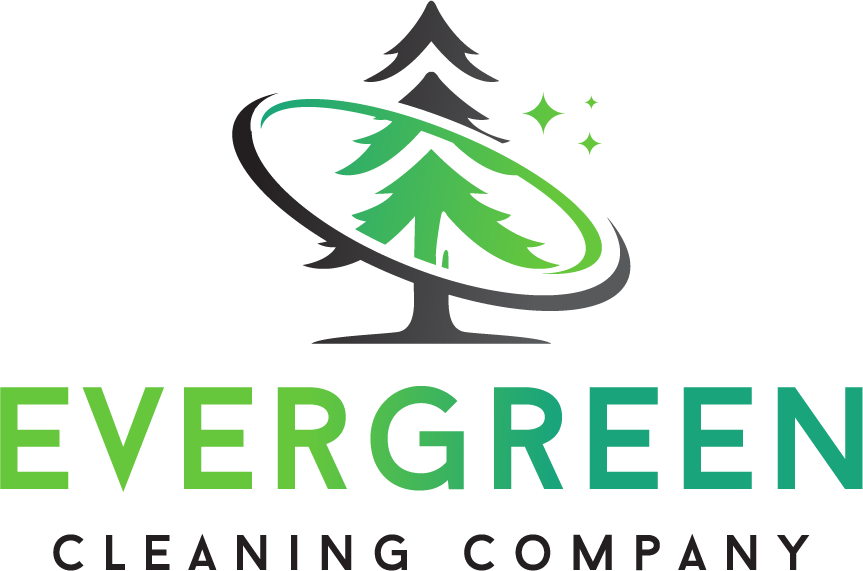Understanding Common Household Allergens and How to Manage Them
Allergens in the home can be a source of frustration, especially for those with allergies or asthma. From pet dander and dust mites to mold and pollen, allergens can be found in nearly every corner of our homes, often in places we wouldn’t expect. They can affect our quality of life, disrupt sleep, and cause a range of uncomfortable symptoms such as sneezing, coughing, watery eyes, and more. The good news is, with some knowledge and proper management, you can significantly reduce allergens in your living space and breathe easier.
In this blog post, we’ll take a closer look at some of the most common allergens found in homes, where they hide, and steps you can take to minimize their presence. We’ll also explore the importance of professional cleaning services, like those offered by Evergreen Cleaning Company, which can help you stay on top of allergens and maintain a healthier environment for you and your family.
1. Dust Mites: The Hidden Threat in Your Bedding and Furniture
Dust mites are one of the most common allergens found in homes. These microscopic creatures are too small to be seen with the naked eye but can cause big problems, particularly for people with asthma or dust allergies. Dust mites feed on dead skin cells that we naturally shed, and they thrive in warm, humid environments such as bedding, upholstery, and carpets.
They don’t bite or cause direct harm, but their waste particles can become airborne and, when inhaled, can trigger allergic reactions. These reactions may include symptoms like nasal congestion, sneezing, coughing, itchy eyes, and even asthma attacks in those who are particularly sensitive.
How to Manage Dust Mites:
To reduce dust mites in your home, it’s essential to focus on areas where they are most likely to thrive. Start by washing bedding, pillowcases, and blankets in hot water (at least 130°F) once a week to kill dust mites. Consider using allergen-proof covers on pillows, mattresses, and box springs to prevent mites from embedding themselves in these surfaces. Vacuum carpets and upholstered furniture regularly with a vacuum cleaner equipped with a HEPA filter, which can trap allergens rather than circulating them back into the air. Reducing humidity levels in your home can also help, as dust mites thrive in humid environments. Keeping the humidity below 50% is ideal, and using a dehumidifier in more humid areas, such as basements, can make a big difference.
2. Pet Dander: A Source of Allergens Beyond the Fur
If you have pets, you probably already know that they can be a significant source of allergens in the home. Pet dander consists of tiny flakes of skin shed by cats, dogs, and other furry animals. While pet hair itself is not an allergen, dander often sticks to hair, which then becomes a vehicle for spreading allergens throughout your home. Dander can settle on carpets, furniture, curtains, and even float in the air, leading to allergic reactions in sensitive individuals.
Pet allergies can cause a wide range of symptoms, including sneezing, coughing, wheezing, and itchy or watery eyes. Even if you aren’t allergic to pets, the accumulation of dander in your home can still contribute to poor indoor air quality, making it harder to breathe.
How to Manage Pet Dander:
To keep pet dander under control, regular grooming of your pet is key. Brushing your pet frequently helps to remove dander before it spreads throughout your home. It’s also a good idea to bathe your pet on a regular basis to reduce dander and allergens. In your home, vacuum carpets, rugs, and furniture often, again using a HEPA filter vacuum to trap allergens effectively. Consider designating specific areas of the home, like bedrooms, as pet-free zones to give allergy sufferers a place to escape the allergens. Air purifiers equipped with HEPA filters can also be helpful in capturing airborne dander and improving the air quality in your home.
3. Mold: A Moisture-Loving Allergen
Mold is another common allergen found in homes, particularly in damp or humid areas such as bathrooms, basements, and kitchens. Mold releases spores into the air, which, when inhaled, can trigger allergy symptoms. These symptoms may include sneezing, coughing, nasal congestion, and irritation of the eyes, throat, or skin. In some cases, mold exposure can also exacerbate asthma symptoms.
Mold grows in areas with excess moisture, making it important to address leaks and humidity problems in your home to prevent its spread. Even a small amount of mold can produce enough spores to cause a reaction, so it's crucial to keep your home dry and clean.
How to Manage Mold:
To reduce the risk of mold in your home, start by addressing any leaks in pipes, roofs, or windows immediately. In areas prone to moisture, such as bathrooms and basements, ensure there is proper ventilation to help reduce humidity. Running an exhaust fan during and after showers, using a dehumidifier, and ensuring adequate air circulation can all help keep moisture levels in check.
Regular cleaning is also important. Wipe down damp surfaces like shower walls, bathroom tiles, and kitchen sinks regularly with a mold-killing cleaner. Pay extra attention to areas that don’t get much airflow, like closets or attics, where mold can grow undetected.
4. Pollen: An Outdoor Allergen That Finds Its Way Indoors
Pollen is a well-known trigger for seasonal allergies, but it’s not just an outdoor problem. Pollen can easily make its way indoors through open windows and doors, on clothing, and even on pets. Once inside, it can settle on furniture, carpets, and other surfaces, where it can linger and continue to cause allergic reactions even when the pollen season is over.
Common symptoms of pollen allergies include sneezing, runny nose, itchy eyes, and scratchy throat. For individuals who suffer from hay fever, even small amounts of pollen indoors can cause symptoms to flare up.
How to Manage Pollen:
To minimize pollen exposure in your home, start by keeping windows and doors closed during high pollen seasons, especially during the early morning hours when pollen counts are typically highest. Use an air purifier with a HEPA filter to capture airborne pollen and keep indoor air clean. When returning from outdoor activities, change your clothes and shower to remove pollen from your body and hair. Vacuuming carpets, rugs, and upholstery frequently will also help prevent pollen from settling in your home.
5. Cockroach Droppings: An Unexpected Allergen
Cockroaches may be an unpleasant household pest, but they are also a source of allergens. Cockroach droppings, saliva, and even their shed body parts can become airborne and trigger allergic reactions when inhaled. Cockroach allergens are particularly problematic in urban areas and older homes but can occur anywhere.
Symptoms of cockroach allergies are similar to those caused by other common allergens, such as sneezing, coughing, congestion, and worsening of asthma symptoms. Cockroaches can also carry bacteria that pose additional health risks, making it important to keep these pests under control.
How to Manage Cockroach Allergens:
The best way to reduce cockroach allergens is to prevent infestations in the first place. Start by keeping your home clean and free of food crumbs, grease, and garbage that might attract cockroaches. Store food in airtight containers and take out the trash regularly. Seal cracks and crevices where cockroaches might enter your home, and repair any leaks in pipes or faucets that could create damp environments for them to thrive.
If you do spot signs of a cockroach infestation, act quickly. Consider contacting a pest control professional to address the issue and reduce the allergen load in your home.
How Evergreen Cleaning Company Can Help Reduce Allergens
Managing allergens in the home can be a daunting task, but you don’t have to do it alone. At Evergreen Cleaning Company, we specialize in deep cleaning services that go beyond the surface to address the allergens that may be lingering in your home. Our team uses advanced cleaning techniques and tools designed to target areas where allergens such as dust, pet dander, mold, and pollen tend to accumulate.
In addition to our standard cleaning services, we offer a specialized home allergen cleaning service that includes a spray treatment designed to neutralize common household allergens. This treatment targets allergens at their source, helping to reduce their presence and keep your indoor air cleaner for longer. Whether you or a family member suffer from allergies or you simply want a cleaner, healthier home environment, Evergreen Cleaning Company is here to help. With our expert services, you can rest easy knowing that your home is not only clean but also healthier for you and your loved ones.




